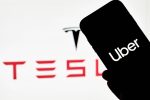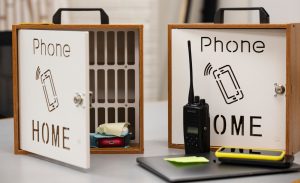
Tesla’s FSD Takes the Wheel of Uber and Lyft Services, but Are Passengers Really Safe?
Tesla’s Full Self-Driving (FSD) software is changing the game for Uber and Lyft drivers, offering a glimpse into a future where ride-hail services might operate autonomously. Yet, with this growing trend comes a set of concerns, especially as more drivers use FSD to create makeshift “robotaxis.” While Elon Musk’s grand vision of a fully autonomous Tesla ride-hailing network is still in development, some drivers are taking matters into their own hands, utilizing FSD for daily rideshare operations. But this DIY approach has raised questions about safety, regulation, and the limitations of current self-driving technology.
Many rideshare drivers have embraced Tesla’s FSD, which costs $99 per month, as a way to ease the demands of long hours behind the wheel. Drivers claim it reduces fatigue, allowing them to extend their shifts and increase earnings. While FSD assists with steering, acceleration, and braking, it is not classified as fully autonomous. Tesla’s system requires drivers to stay attentive and ready to take control at any moment.
One example highlighting the risks of this technology occurred in Las Vegas. A Tesla using FSD collided with an SUV at an intersection, leading to a crash that injured the other driver and raised red flags about the software’s reliability. The driver, Justin Yoon, was operating his vehicle hands-free when the FSD system failed to slow the car in time, despite an SUV crossing its path. Yoon had to intervene at the last second, but it was too late to avoid the collision.
While the idea of semi-autonomous driving is enticing, drivers like Yoon and others have expressed concerns about the software’s unpredictability. Reports of sudden acceleration, erratic braking, and difficulties in complex driving scenarios, such as airport pickups and construction zones, are common. Sergio Avedian, a rideshare driver from Los Angeles, admits that while FSD is useful, he avoids using it when passengers are in the car due to its limitations. According to Avedian, around 30-40% of Tesla ride-hail drivers use FSD regularly, highlighting the growing reliance on the technology, despite its flaws.
A key issue is the regulatory gap surrounding the use of FSD in commercial settings. Unlike fully autonomous systems developed by companies like Waymo and Cruise, which are subject to strict regulations and testing, Tesla’s FSD operates in a more ambiguous space. U.S. authorities consider Tesla drivers responsible for their vehicles at all times, regardless of whether FSD is in use.
This lack of oversight is raising alarms. Analysts and safety experts are calling for more stringent guidelines to regulate the use of FSD in ridesharing. The National Highway Traffic Safety Administration (NHTSA) is aware of the risks and is investigating incidents like Yoon’s crash, but the absence of clear regulations leaves room for potential misuse.
Elon Musk’s vision for Tesla’s robotaxi network is grand, with plans to offer fully autonomous Teslas for ride-hailing services by utilizing cars that are privately owned but idle. However, the technology still has a long way to go. Drivers using FSD today see the potential, but they remain cautious about its reliability. Kaz Barnes, a Tesla driver who has completed over 2,000 rides using FSD, looks forward to a future where he can let the car do all the work. For now, though, it remains a tool that helps drivers work longer—but not without its risks.
As the automotive industry edges closer to fully autonomous driving, the use of Tesla’s FSD in ridesharing brings both benefits and challenges. While drivers can earn more and reduce stress by relying on the software, safety concerns and regulatory gaps present significant hurdles. With Musk’s robotaxi unveiling on the horizon, the push for better oversight and technology improvements is more crucial than ever. Only time will tell if Tesla’s FSD can safely navigate the complex world of ridesharing, or if stricter regulations will need to catch up to this rapidly evolving space.


